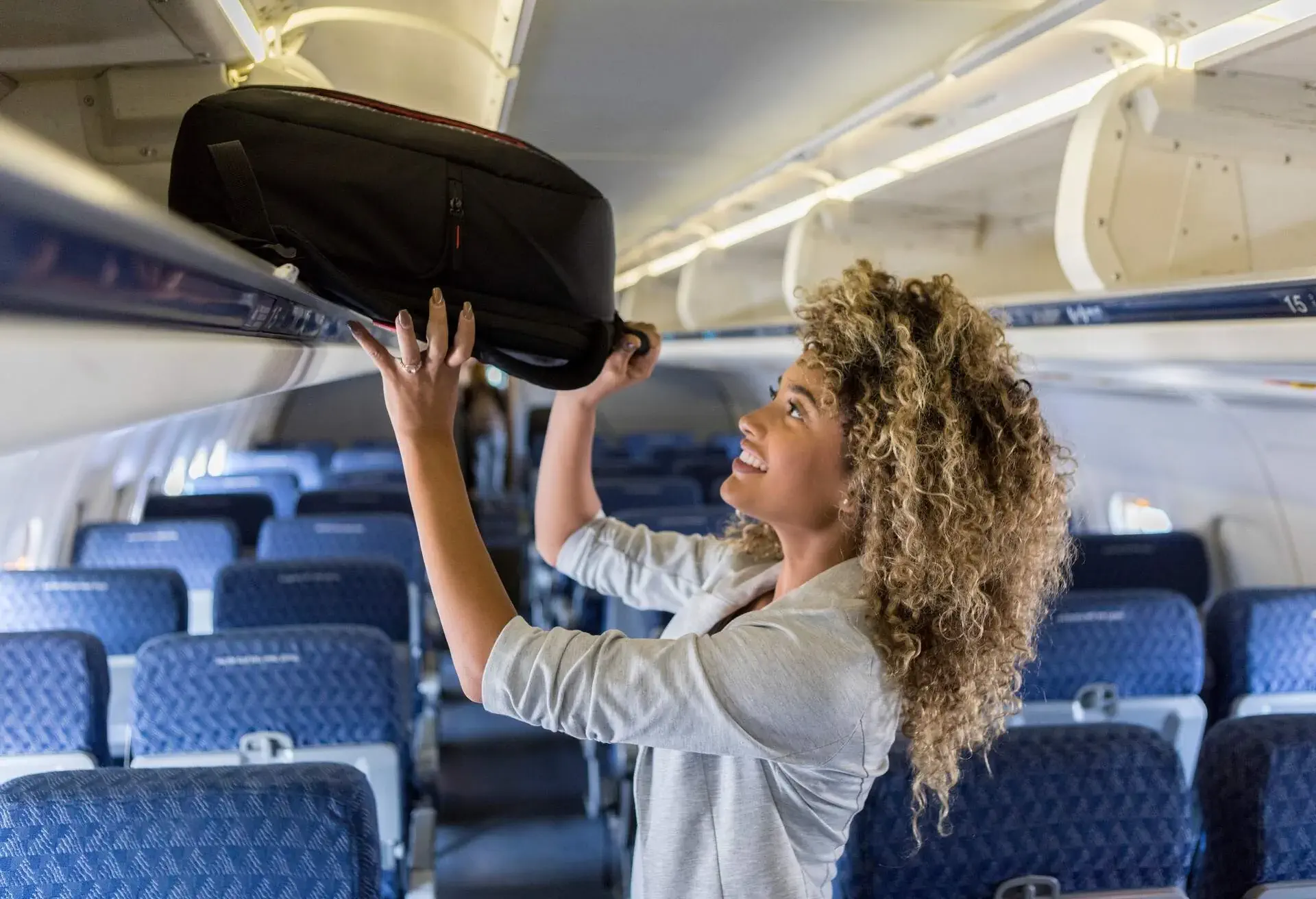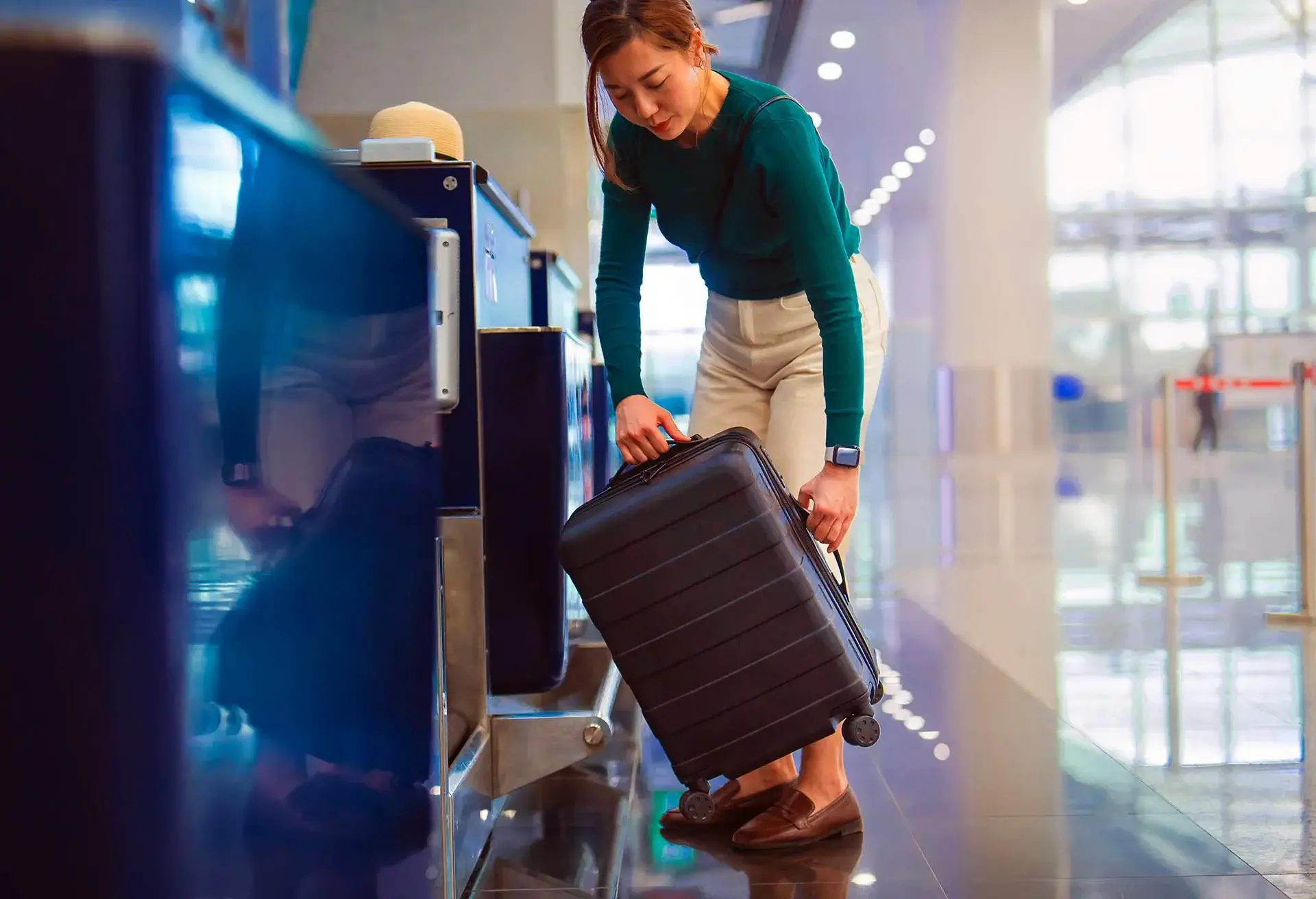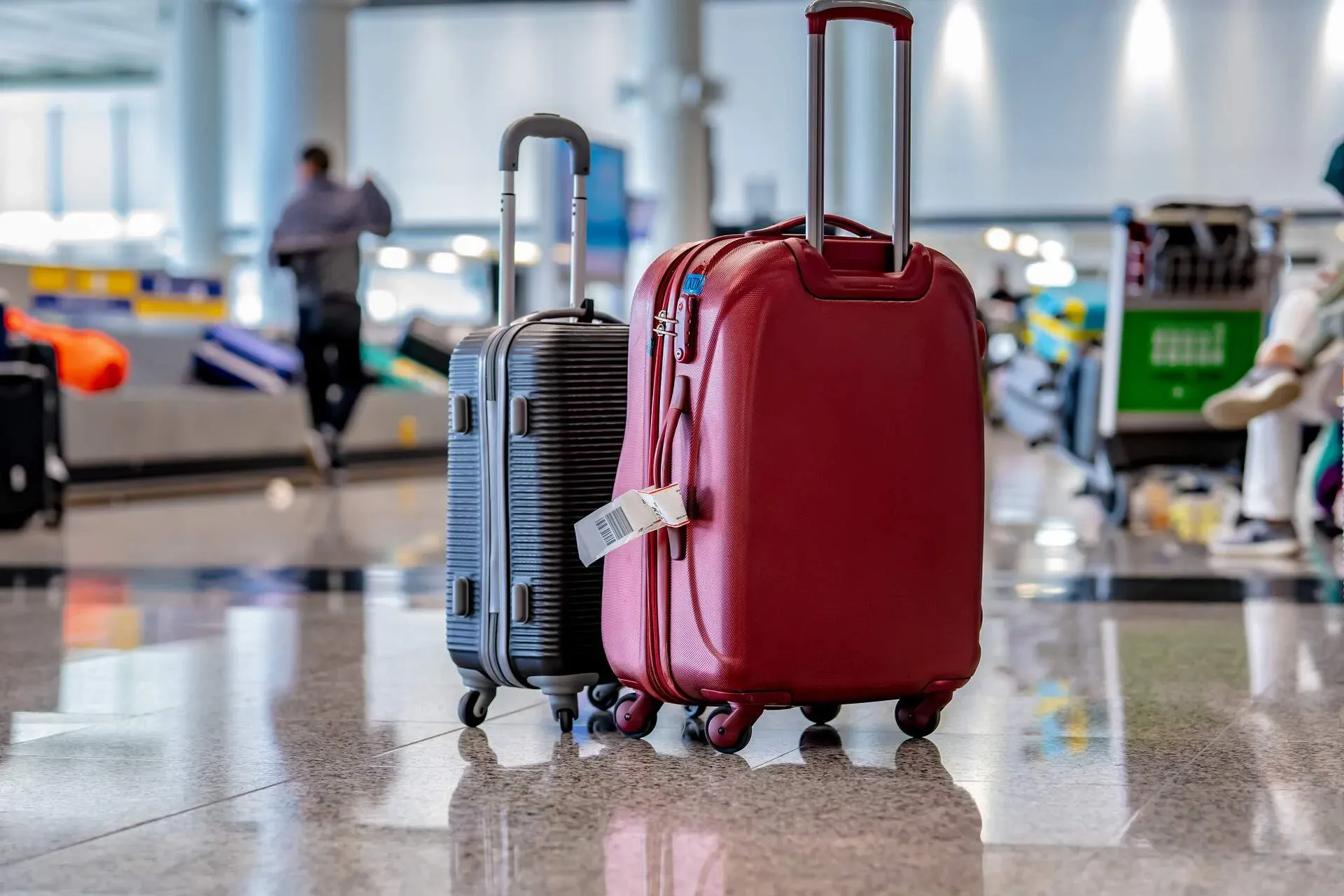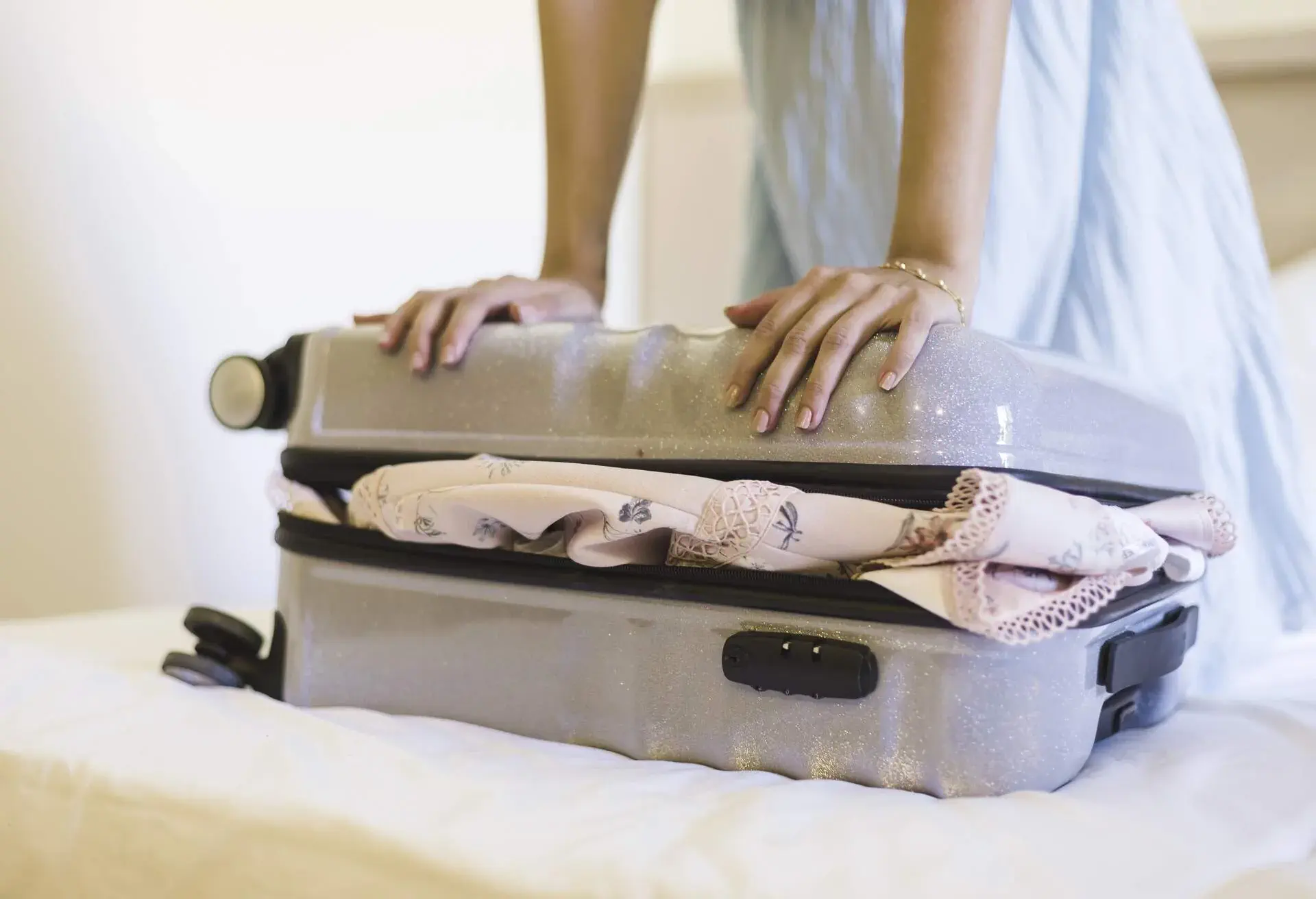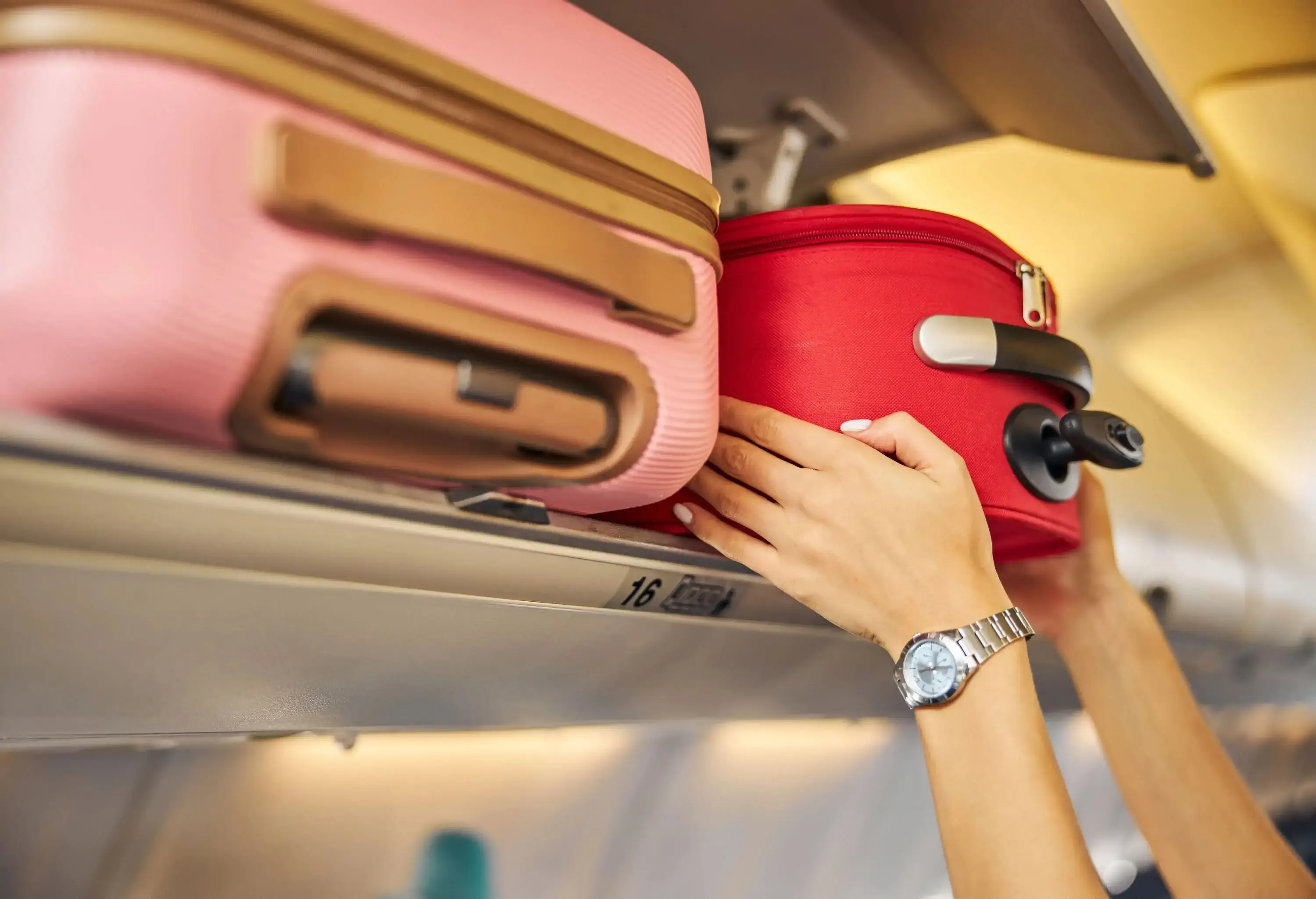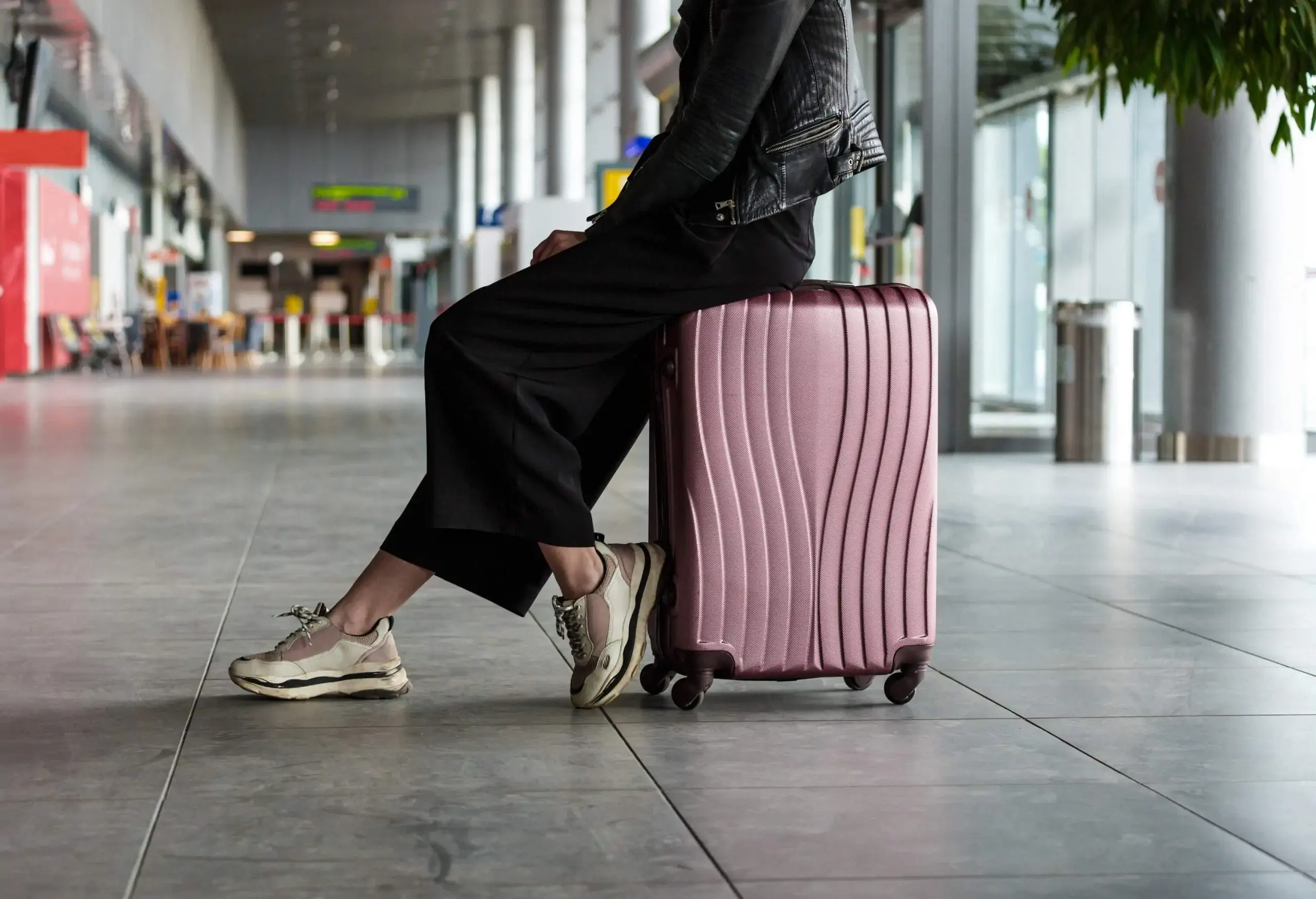Unsure if your carry-on bag meets the requirements to go on the plane? This article lays out everything you need to know to avoid encounters with TSA, excess baggage fees and a stressful start to your vacation. You can also use the dedicated airline-by-airline guides to check what size and how heavy your carry-on luggage can be.
1. What size is carry-on luggage?
Most airlines follow very similar size regulations when it comes to carry-on luggage. The majority go by a standard height, width and depth measurement. Remember, those dimensions include the handle, wheels and anything else that may protrude from your suitcase so don’t miss them from your measurements.
In general, the standard domestic carry-on luggage size is 22 x 14 x 9 inches. This can vary between domestic and international flights, although not by much. For most international flights, the maximum carry-on luggage size is 21.5 x 15.5 x 9 inches or 46 linear inches. If your luggage fits within these dimensions, you’ll have no problems treating it as carry-on.
There are some exceptions, such as Qatar Airways, which states measurements of 20 x 15 x 10 inches or 45 linear inches for its carry-on baggage. Pay attention in particular if you’re flying in Europe or with smaller regional airlines, as they can have very different restrictions depending on the airplane.
A few airlines, including Delta, American Airlines, Air Canada and Southwest Airlines, measure their carry-on using linear inches. This is a measurement that adds up the height, width and depth of your carry-on to create a single total number.
For example, Delta’s carry-on limit is 45 linear inches – so if the combined height, width and depth of your luggage is less than 45 inches, you can take it as carry-on:
✅ 22 (h) + 14 (w) + 9 (d) = 45 inches
✅ 25 (h) + 10 (W) + 10 (d) = 45 inches
❌ 24 (h) + 14 (w) + 8 (d) = 46 inches
Carry-on size limits are there to make sure everyone’s luggage will fit in the overhead bins. I always try to fly with only carry-on luggage no matter where I go or for how long. Apart from it forcing me to not overpack, I always travel easier knowing my luggage is in reach rather than in the hold, or even worse, still back at the airport!
2. What is the carry-on luggage weight limit?
Other limits vary dramatically by airline, and can even change for the same airline depending on where you’re flying from and to. From a lightweight 15 lbs with Qantas, Qatar and Singapore Airlines to a more manageable 51 lbs with British Airways, it’s always important to check in advance.
As long as you’re within a few pounds of any weight limit, you shouldn’t have any problems.
3. What is a personal item on a plane?
A personal item refers to a small bag like a laptop bag, purse or briefcase. Airline size regulations for personal items vary wildly, but as long as it’s small enough to fit under the seat in front, you shouldn’t have any problems.
If you have something specific to carry such as a baby bag for diapers and food, a pair of crutches or something fragile, airlines tend to be quite accommodating in including it as carry-on. To be on the safe side, you should always check directly with the airline in advance.
4. Carry-on luggage vs. a personal item: what’s the difference?
The practical difference between carry-on luggage and a personal item is that the former is for storage in the overhead bin and the latter for under the seat in front of you. A personal item is always free to take on board. Many airlines also include a carry-on luggage allowance in the ticket price. Some – especially small and budget airlines – charge extra, although it’s usually still cheaper than paying for checked luggage.
If you’re not sure what you can take in your carry-on or personal item, check out our FAQs.
5. Carry-on luggage policies for domestic airlines
Although there are differences in carry-on luggage size and weight restrictions between lots of different airlines, many also now tow a similar line to each other. Most US airlines follow the 22 x 14 x 9 inch size limit for carry-on bags and 18 x 14 x 8 inches for personal items.
Frontier, Southwest, and Spirit Airlines have slightly more generous size restrictions for carry-on bags. See the table below for details.
When it comes to carry-on baggage, few domestic airlines now specify a weight limit. Of those we’ve detailed below, only Hawaiian Airlines and Frontier Airlines impose weight restrictions. The rest go by dimensions only.
For personal items, Delta, Alaska, Hawaiian and Southwest Airlines all dispense with measurements. Instead, they simply asking that it fits under the seat in front of you. None of the domestic airlines imposes a weight limit.
To make it easier for you to search, I’ve gone through the main domestic US airlines and detailed the size and weight limits for both carry-on luggage and personal items. For useful tips when flying with a specific airline, check out the detailed carry-on guides via the airline links in the table.
6. Carry-on luggage policies for international airlines
Most international airlines have a confusing array of fares and classes to choose from. These typically come with different carry-on and personal item restrictions. Be sure to know your luggage needs before you choose your fare to avoid paying extra for added bags later.
Note too that almost all international airlines set their dimensions in cm rather than inches. I’ve converted them in the table below for easier reference and comparison with domestic carriers.
The most generous airlines for carry-on dimensions are British Airways and EasyJet. Although each also imposes a weight limit, they’re high enough to pose no packing problem. At the other end of the scale, perhaps surprisingly, is Qatar Airways. Its stated dimensions are out of sync with most other airlines (even if the linear measurement is comparable) and its carry-on weight very low at just 15 lbs.
Many airlines including Aer Lingus, Air Canada, Lufthansa, Scandinavian Airlines (SAS) and Turkish Airlines have close enough the same carry-on size measurements. Weight allowances vary though. Converse to the domestic airlines, almost all the international airlines I’ve listed impose carry-on weight restrictions, and many on personal items as well. The only exception is Air Canada.
For useful tips when flying with a specific airline, check out the detailed carry-on guides via the airline links in the table.
An easy way to check your carry-on luggage size fits your airline policy
To take the anxiety out of boarding and make sure your carry-on is always compliant, we created a fun Bag Measurement tool. Download the KAYAK app and you’ll never need a tape measure again.
Just open the app and tap on ‘Measure your bag’. Using your phone camera, capture your luggage and our app will do the math for you to give your bag’s exact measurements. Handily, it also compares airline baggage policies in one place too, so you can quickly check your carry-on fits no matter who you’re flying with. Watch the video below to see how it works.
Liquids in carry-on luggage
One major restriction with carry-on luggage comes with taking liquids on board. The TSA imposes strict rules around what liquids you’re allowed to take, and how much you can take of each. Knowing your allowance will help you avoid problems at security and means you won’t have to leave that precious bottle of scent behind.
All your liquids must fit in containers of 3.4 ounces (100 ml) or less. Collectively, they must also all fit within one clear, zip-top bag that is one quart (32 ounces) or smaller in size. Everyone in your travel group is entitled to this allowance, including children.
There are some exceptions to the liquid allowance for medically necessary liquids, from prescribed medications to breast milk. For everything you need to know, KAYAK has a dedicated guide to traveling with liquids.
Carry-on rule updates – what’s new in 2025?
With so many different airlines and destinations, the rules around different aspects of carry-on luggage change regularly. Here you’ll find the latest changes to carry-on regulations around the world, so you always have the latest information at your fingertips
EU airports reinstate 100 ml liquid rule
New 3D scanner technology at airport security had promised an end to the 100 ml (3.4 oz) limit for liquids in carry-on luggage. In 2024, many airports using the new scanners had lifted the ban, with new two liter limits (about half a gallon) in place. However, an issue with the new technology has led the EU to reinstate the 100 ml limit across all 27 member countries, and the UK. While this appears to be a temporary technical issue, there’s currently no set date for when it will be resolved and the liquid limits removed.
One-size-fits-all for carry-on bags?
There have long been discussions in both the US and EU about creating a policy to standardize carry-on luggage rules and regulations. The idea would be to force airlines and airports to adopt the same policy for baggages sizes, weights and costs. This would make it easier for passengers to plan and eliminate those dreaded hidden fees.
No regulations have yet emerged either side of the pond, however. And I wouldn’t expect them to any time soon with such a complex worldwide problem to solve. But with conversations ongoing, there’s still hope of a smoother, more transparent system some time in the future. In the meantime, each airline continues to set its own size and weight limits.
Air Canada introduces carry-on fees
From January 2025, passengers buying a basic economy fare for Air Canada’s North American and sun routes will no longer be able to bring carry-on luggage on board. While a personal item is still allowed, basic economy customers will now have to check in their other bags for a fee before going through airport security. Arrive at the gate with an ineligible bag and you’ll face an elevated charge to check it in.
Multiple airlines are banning power banks
Major airlines around the world are taking measures against the risk of in-flight fires by reviewing power bank storage and usage on board. In March 2025, Eva Air and China Airlines followed the example set by Busan Airlines after its 2024 airplane fire and introduced new power bank restrictions.
Passengers can no longer pack power banks in checked luggage, and with many airlines even in the overhead bin. Instead you must instead store them either under the seat in front of you or in the seat pocket. Charging and using them onboard is also strictly prohibited.
Expect to see many more airlines follow suit in 2025, particularly in Asia where Thai Airways, Singapore Airlines and Air Asia have all announced similar policy changes.
Carry-on luggage FAQs
A backpack is generally considered a personal item rather than a carry-on, as long as it fits below the seat in front of you or meets the dimensions specified by the airline.
If you’re traveling with a full size backpack that can only be stored in the overhead bins, this would qualify as carry-on luggage. As always, check the permitted dimensions and weight before you travel.
A duffel bag is typically considered carry-on luggage, yes. This does, of course, depend on its dimensions which are almost always the deciding factor for airlines over the type of luggage you have.
If it’s too big to fit under the seat in front of you and has to go in the overhead bin, you should consider it to be carry-on luggage rather than a personal item.
None of the international airlines we’ve mentioned in this guide would allow a 24-inch suitcase as carry-on, as it doesn’t meet their size requirements. Domestically, both Frontier and Southwest Airlines would allow you to take your 24-inch suitcase as carry-on thanks to their generous size limits.
Generally, I’d say a 24-inch bag will be treated as check-in luggage more often than carry-on, so think carefully before traveling with it!
The TSA has strict rules around what you can take in your carry-on luggage. Generally speaking you can take most things you’ll need for your journey.
Foods including fruits are fine. If you’re taking baby foods and medicines it’s worth checking with the airline first to make sure they don’t breach liquid allowances. If you have support devices like crutches, walking stick, stroller or wheelchair, you shouldn’t have any problems but let the airline know in advance, just to be sure.
The TSA has strict rules around what you can’t take in your carry-on luggage. Rules against carrying weapons and ammunition are obvious, but it’s liquid allowances that catch most people out.
Currently, you can’t bring any liquid, gel, aerosol, cream or paste containers bigger than 3.4 ounces (100 ml). If you do, it will be confiscated at security or you’ll be turned away if you’re not willing to relinquish it. Exceptions include medications and children’s foods but it’s always worth checking in advance to be sure.
This post is part of our Flight guide. Want to make sure you get the most out of your trip? Read about how to find cheap flights in our guide.
Disclaimer: Prices and information are correct as of 31.03.2025 and may vary with time.

